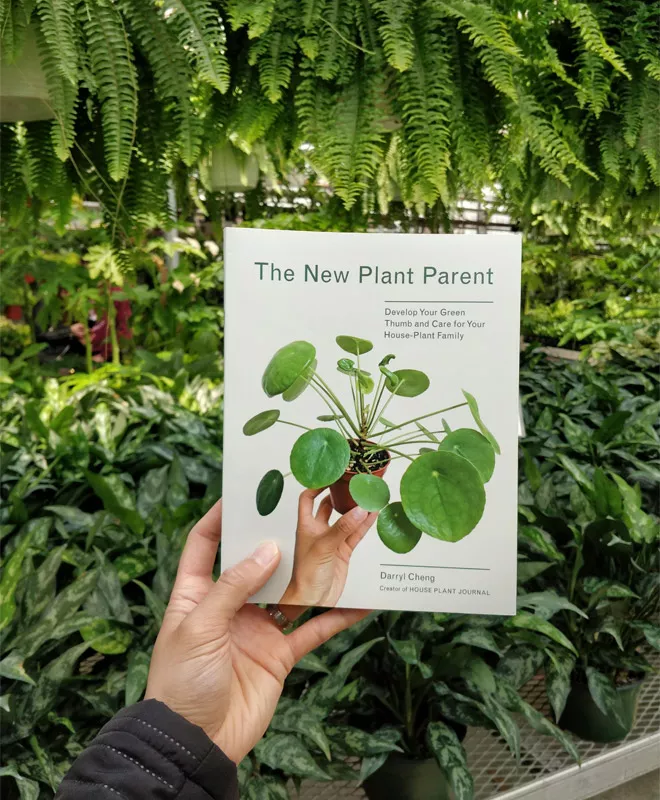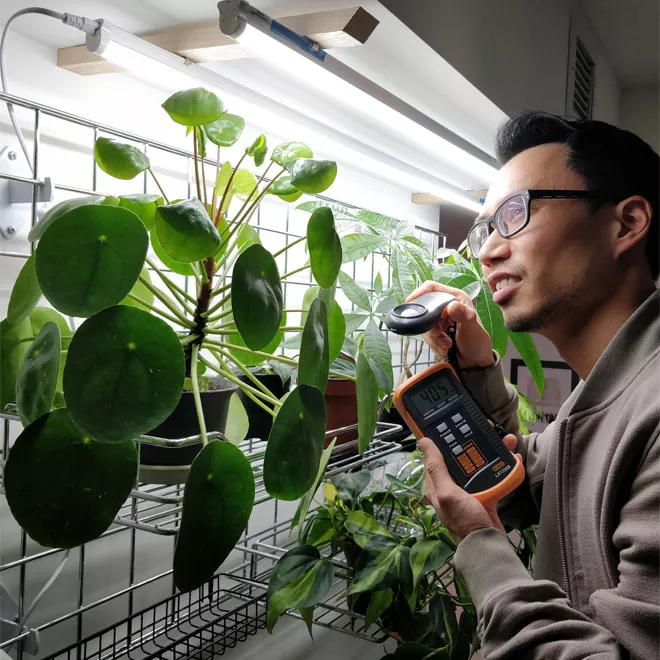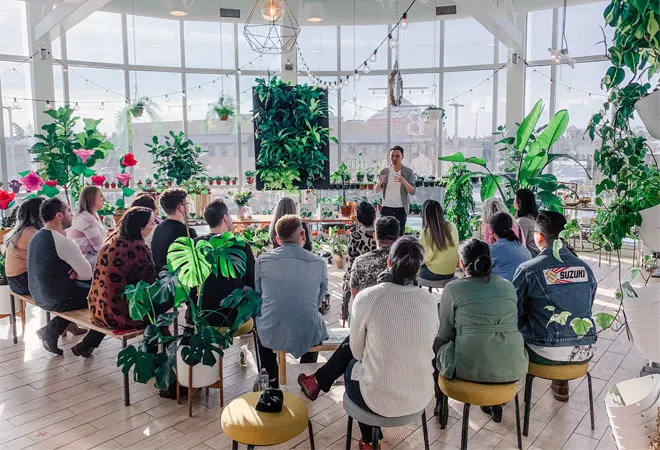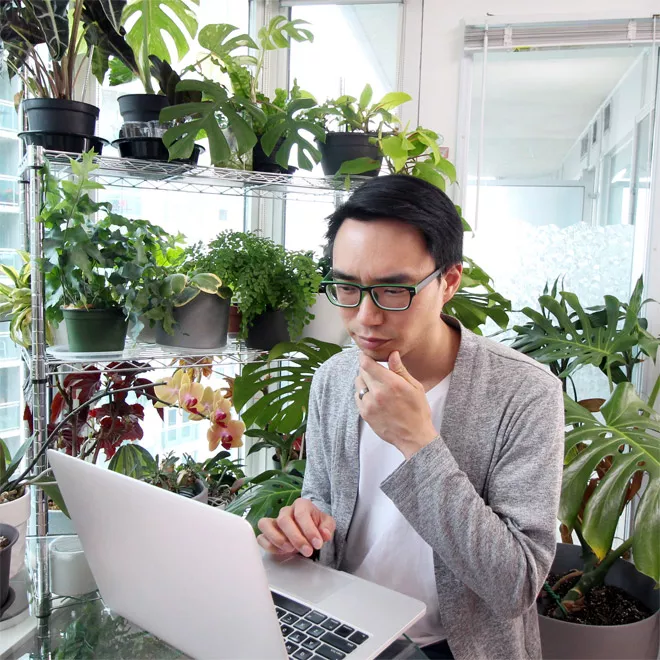At CANNA we're excited to share passionate grower stories from across Canada that resonate with our community and inspire us to grow, in the widest sense of the word.
THE JOURNEY
Darryl, please tell us a little about who you are.
Darryl: I'm an Industrial Engineer by trade, but in 2014 my mom asked me for help with her House Plants. I began documenting my journey, tips and tricks for indoor plant parents via "House Plant Journal" which has translated into 618k followers on Instagram alone, and I am also the author of "The New Plant Parent", an engineer's approach to House Plant care.
In the short time since I started House Plant Journal (on Tumblr, then Youtube, then Instagram), I've answered THOUSANDS of questions about plant care. The resounding consensus seems to be that people can't find (or don't trust) the plant care information on the internet.
Part of the problem is that most plant care information is usually associated with a specific plant, giving the impression that those conditions/care instructions are unique to that plant. In reality, you should consider your home as having several potential plant homes and choose plants accordingly.
Another problem is people tend to forget that plants are alive. Let me elaborate on what this means: plants will grow; interact with the environment around them; they have requirements that dictate whether they hang on for dear life or thrive; they'll protest in difficult times; they'll reward you in happy times. Yes, there is psychological proof of their beneficial effects but I assure you, there are detrimental effects to both plants and humans when either of you is in ill health.

Tell us the story of how you became a passionate grower.
Darryl: "My mom made me" [laughs]
We had a home with a veggie garden outside when I was growing up, and my mom had an incredible green thumb. But, a few years ago, she asked me to help her decorate her current home with House Plants. The home has beautiful skylights throughout, my mom is a great gardener, so I was confused as to why she would request my help taking care of her indoor plants. I asked myself what's so different between an outdoor garden and House Plants?
So I Googled how tos, read through a few books, and found that most if not all the advice out there was just the same vague stuff over and over. That's when I decided to document my journey, as an engineer, with these plants..."House Plant journal" was born.
I wrote about everything that had to do with my mom's House Plants and how I was taking care of them, but I focused especially on being more precise about the most important thing... LIGHT!
Back then, Instagram allowed 15 sec video clips which I used to post timelapse videos of plants rehydrating which is really what helped my account take off. I was picked up by big sites like "NOW this" on Facebook, and big IG accounts which drove a big audience towards mine.
Soon after, a literary agent got in touch, we put together a proposal, and "New Plant Parent" was published in 2019.
In March 2019 my book was released, and the company I was then working for went through a big restructuring which resulted in me being laid off. I took this as a sign that I should try this "House Plant vs Engineer" thing full-time. So I spent the majority of 2019 traveling across the US promoting my book and speaking at conferences and nurseries about house plant care.
I would say the secret to all of my plant powers is knowing how to use a light meter and setting all my growth expectations by analyzing the light of a specific area. Once you start to be more concrete about light levels, you'll set your expectations better about how your plant grows.

My passion for plants has really blossomed over the last 3 years, and the thing that really captivates me is having the ability to analyze environments and make a prediction on how well your plants will do there. House Plant parenting has been so mysterious because no one can seem to put a finger on exactly what it
Is about their light that isn't working. Light changes so much throughout the day that the only way to help someone understand how to use it most effectively is by analyzing it.
I created an online course during covid which was launched in summer 2020, and I am currently designing a light meter alongside an incredible team of engineers. It's fantastic because I'm able to be hands-on throughout the entire process.
I would say the secret to all of my plant powers is knowing how to use a light meter and setting all my growth expectations by analyzing the light of a specific area. Once you start to be more concrete about light levels, you'll set your expectations better about how your plant grows.
Show me where you put the plant, I'll tell you what you need to do!
How has your passion for growing evolved over the past 2 years?
Darryl: I've begun collecting different types of plants, which has not only made this journey a really good long-term and rewarding hobby, but after 5-6 years of growing, now I can see how someone could do this for the rest of their life. I'm surrounded by plants everywhere in my 2 bedroom condo. Every window has plants. I even have a bedroom that's a dedicated solarium room. It's full, and further into the room there are stations with grow lights. Anywhere there's a plug, there are lights, anywhere there are windows, there are plants.
Showing proof of how a plant looked when you first got it, vs 2-3 years or even 6 years later takes a long-term vision and is why I have many time lapse videos in the works and document my journey with each plant.
I've also come to find an appreciation for teaching because the issue tends to be the way plant care is taught. You can't just look at the leaf and say what's up. It's in a much more controlled environment. With House Plants nobody has the same issues, external obstructions are different, personal expectations of what a plant should look like are different. So teaching House Plant care, needs to take a different approach to how horticulture is taught professionally.
You have to encourage recreational house plant growers to appreciate the botanical relationship they can have with their plants.

A PASSION
FOR GROWING
What would you consider your favorite part about the entire growing process?
Darryl: I see each plant as its own solar powered sugar factory, and I look at light as the lifeblood of the plant. That's the way I connect with the functioning of the plant
So my favourite part of the entire process is measuring the light, and imagining how good this light would be for this plant right here.
What would you consider to be your least favorite part of the entire growing process?
Darryl: Dealing with pests.
But recently I've been getting macro lenses, so everytime I notice a pest of some kind I see it as an opportunity to document the pest in an effort to help people identify it. If you look online, people don't tend to see the common House Plants with these problems, they're generally agricultural crops. So I try and document it in a relatable way
Browse CANNA pest and disease guidelines to find insightful information
What do you look for most when it comes to growth nutrients and why?

Darryl: Most House Plants are basically tropical foliage plants and profesional growing guidelines from the university of florida suggests a NPK ratio 3-1-2, so I look for anything with multiples of 3-1-2.
Show me where you put the plant, I'll tell you what you need to do!
What differences do you see when growing with clean high quality products vs the alternative?
Darryl: It's harder for me to run an A/B test, but as an experiment I have put half a bulb in old soil, the other in a brand new quality soil, I added clean high quality fertilizer, water, and watched them grow. After 2 weeks worth of growing the plant in new quality soil was more robust.
pH tests on the soils confirmed that the pH from the old soil was a lot more alkaline than the new quality soil.... So changing the soil for your plants is actually very good.
If you expect every single leaf to look perfect, I guarantee you will always be disappointed at some point or another. We have a perfection anxiety. They have a limited lifespan, they don't last forever. I ceremoniously cut them off and thank them for their contribution
What's the one tip you would give a home grower just starting out?
Darryl: The hardest lesson to learn is all leaves have a limited lifespan.
The plant can grow for many years, individual leaves eventually will turn yellow and die out, so putting your plant as close to your windows as possible, watering, fertilizing accordingly is the only way to ensure your plant continues to grow as leaves die off.
When I took care of my mom's plants I realized why it was so easy because she had the two huge skylights in the house. Anybody who you think has a green thumb probably just has a large amount of unobstructed windows. [*laughs]
In the winter, you can go ahead and place the plants up against the window if it's well insulated. Definitely do not let it touch the window in winter if it's not well insulated.
My general recommendation on indoor lighting is:
- As close to window as possible
- Only if the sun is going to shine directly on the plant for more than 2-3 hours, you may want to consider blocking it with a sheer curtain.


What are some of the questions a consumer should be asking when buying plants in-store?
Darryl: If a person is selling you a plant, they don't know how it's going to thrive in your exact environment. You really have to understand what's written on the pegs. I teach plant parents how to measure light precisely, and you can find light requirements by plant online.
When buying a plant at a store you'll also want to identify potential pests. Some specific types of plants will have pests on them 80% of the time and will usually disappoint in the long term, so I rarely ever buy those plants.

Darryl's recommendations
Books:
- Tropical Foliage Plants: A Grower's Guide (Lynn P. Griffith Jr.)
- The Manual of Interior Plantscaping: A Guide to Design, Installation, and Maintenance (Kathy Fediw)
Websites:
- www.greenhousemag.com (good technical information on commercial growing)






























